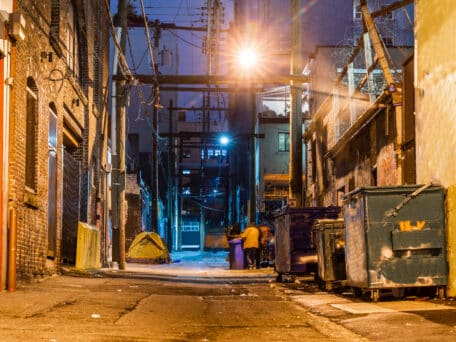Last week, the unelected Sound Transit board unanimously voted to send its $54 billion dollar scheme — (ST3) — to the November ballot. Already, liberals are looking for ways to help sell the multi-billion-dollar boondoggle to voters.
One of their latest tactics is to claim ST3 will boost affordable housing in areas marked for the new light rail stations. In fact. Sound Transit chair and King County Executive Dow Constantine has done his share of championing the claim. City Living Seattle:
The package also passed with an amendment requiring that four-fifths of the surplus land bought around future light rail stations be offered first for the development of workforce housing serving people making less than 80 percent of the average median income.
“It is a comprehensive, exclusive and forward-thinking package. …” said Ellicott Dandy, economic and environmental justice advocacy manager for OneAmerica. “… It will increase our region’s affordable housing supply.”
Only, according to a recent study, ST3 will not help improve affordable housing — not even a little.
Estately, a Seattle-based real estate firm, compared data on the median cost to buy a home within a mile of each existing and forthcoming Link light-rail station with data of other home values nearby. The Seattle Times highlighted the results:
The results were clear: Take the Capitol Hill station, which just opened in March. Already, homes sold near the station are going for a median price of $505,000, or $35,000 more than the rest of the neighborhood.
On Beacon Hill, south of the stadiums, buyers near the station paid a typical price of $516,000 this year, an extra $61,000 compared with other homes in the area. In Pioneer Square, the extra cost near the station is $78,000.
Looking for something cheaper? In Tukwila, the cost to buy a house near that city’s station this year has been $340,000, or $88,000 more than the rest of town.
How about the forthcoming light- rail stations on the Eastside, where communities are already planning for new homes in transit villages? In Bellevue, houses near four of the five coming stations have sold this year for a typical price of $775,000 to $800,000, vs. $710,000 citywide.
Economist Matthew Gardner told the Seattle Times that, if ST3 is approved, property values “would ‘absolutely’ rise near the stations included in the expansion, which would stretch to West Seattle, Ballard, Issaquah, Tacoma and Everett.”
It appears that either liberals are — once again — placing all their trust in government regulations rather than rationally considering basic market-based principles. Or, their affordable housing claims are just another ploy to sell a scheme they know voters are not excited about.
We’re willing to bet it’s the latter.
You see, the liberals touting ST3’s links to affordable housing always preface their claim concerning lands around the stations with the word “surplus.” Given the notable qualification, there are pertinent questions that must be posed.
As the Seattle Times points out, property owners sitting on land near proposed stations stand to make a lot of money if voters approve ST3. We here at Shift never begrudge anyone from making smart investments.
However, it is relevant to ask, how many major Sound Transit donors/supporters have purchased land around transit stations? And, are these people also donating to the likes of Sound Transit board members, and Transit Oriented Development (TOD) cheerleaders, Constantine and Claudia Balducci?




